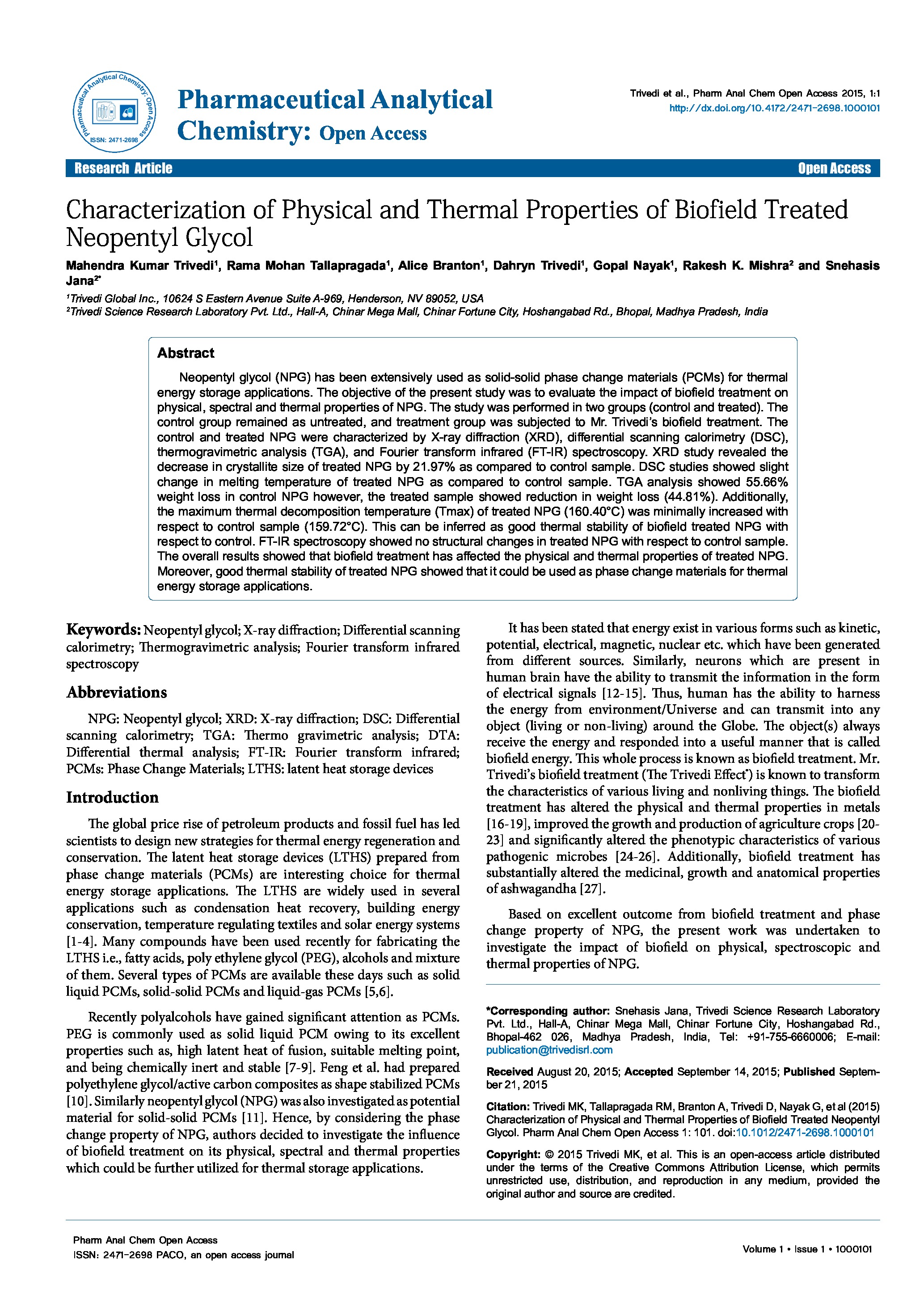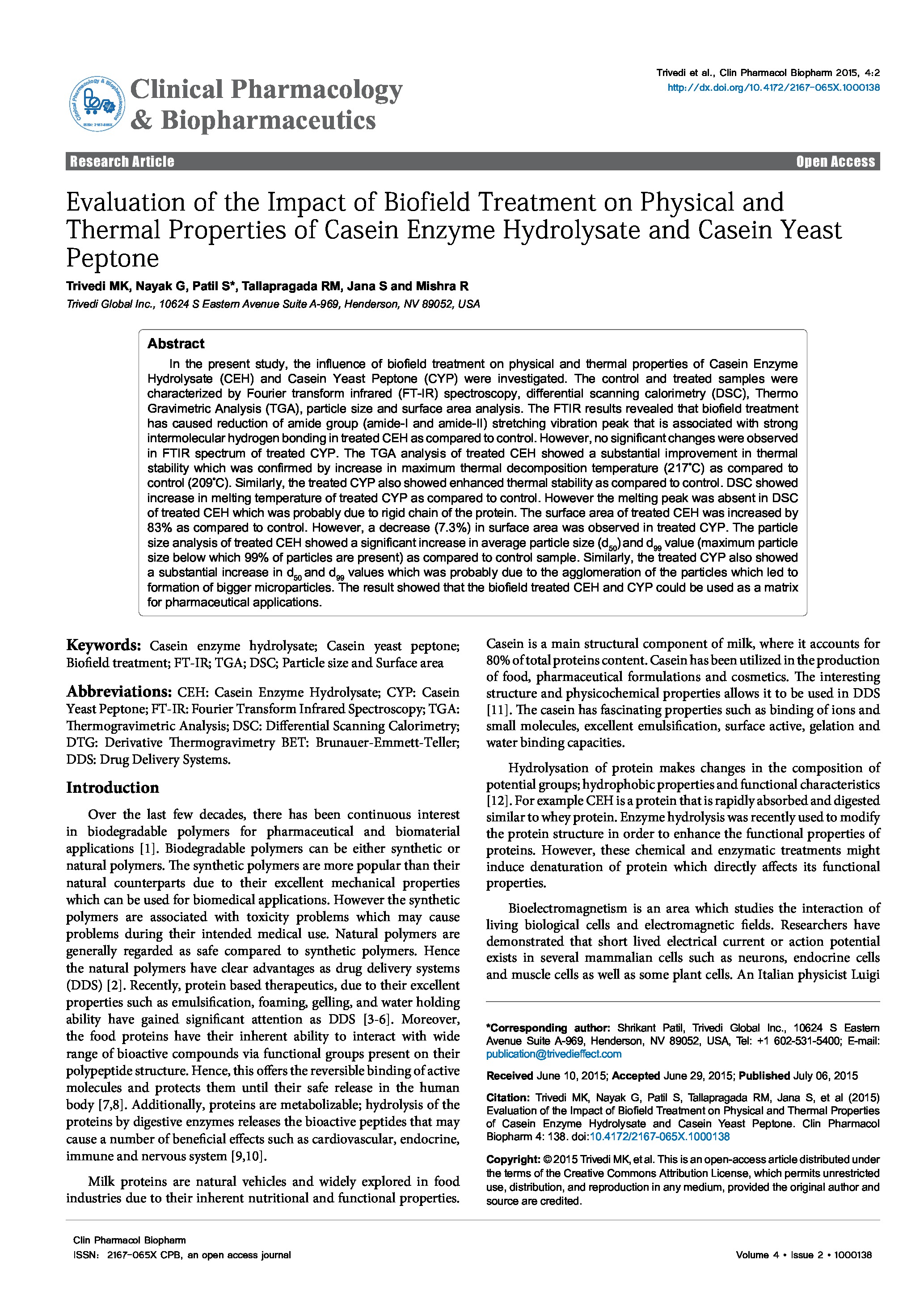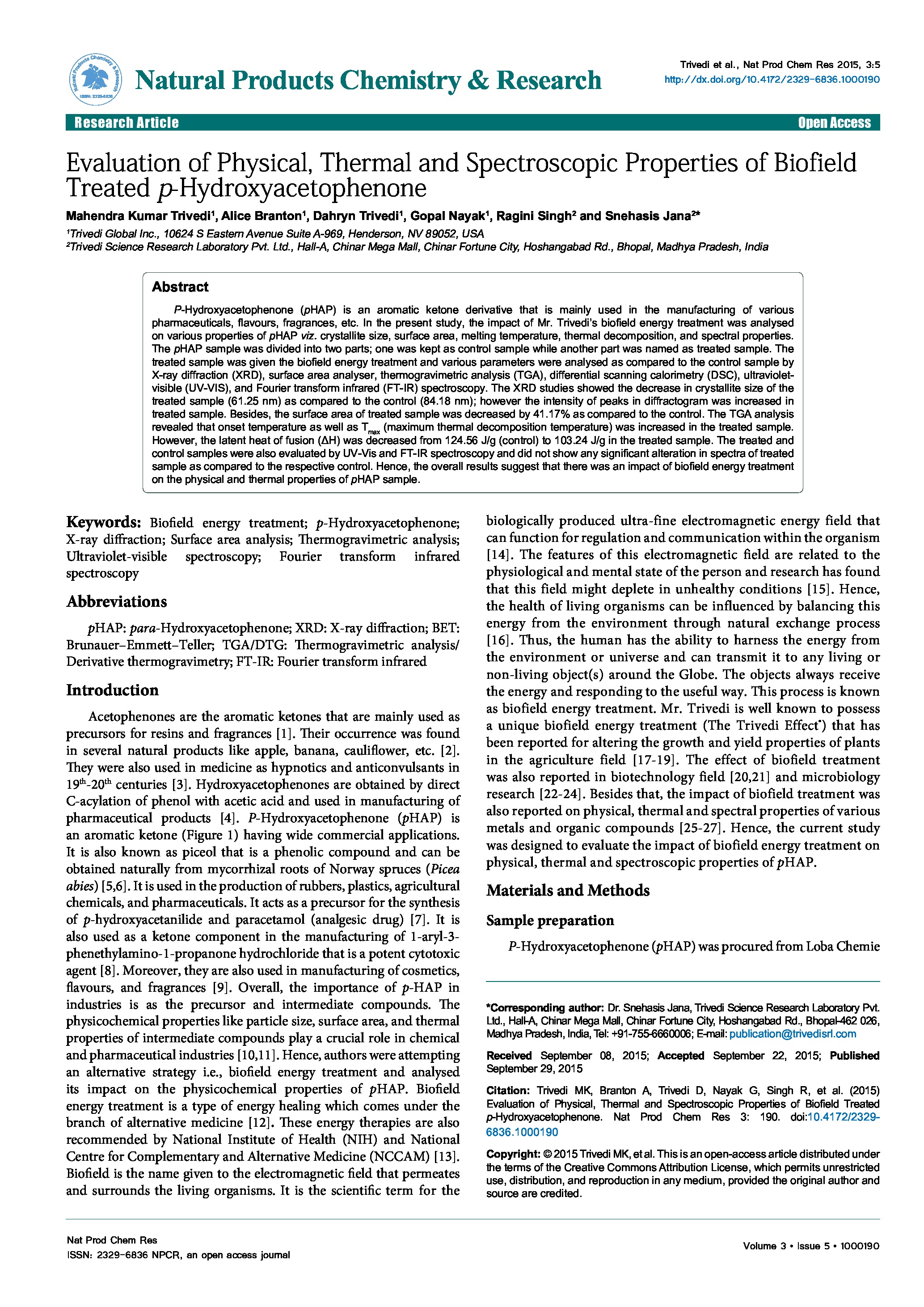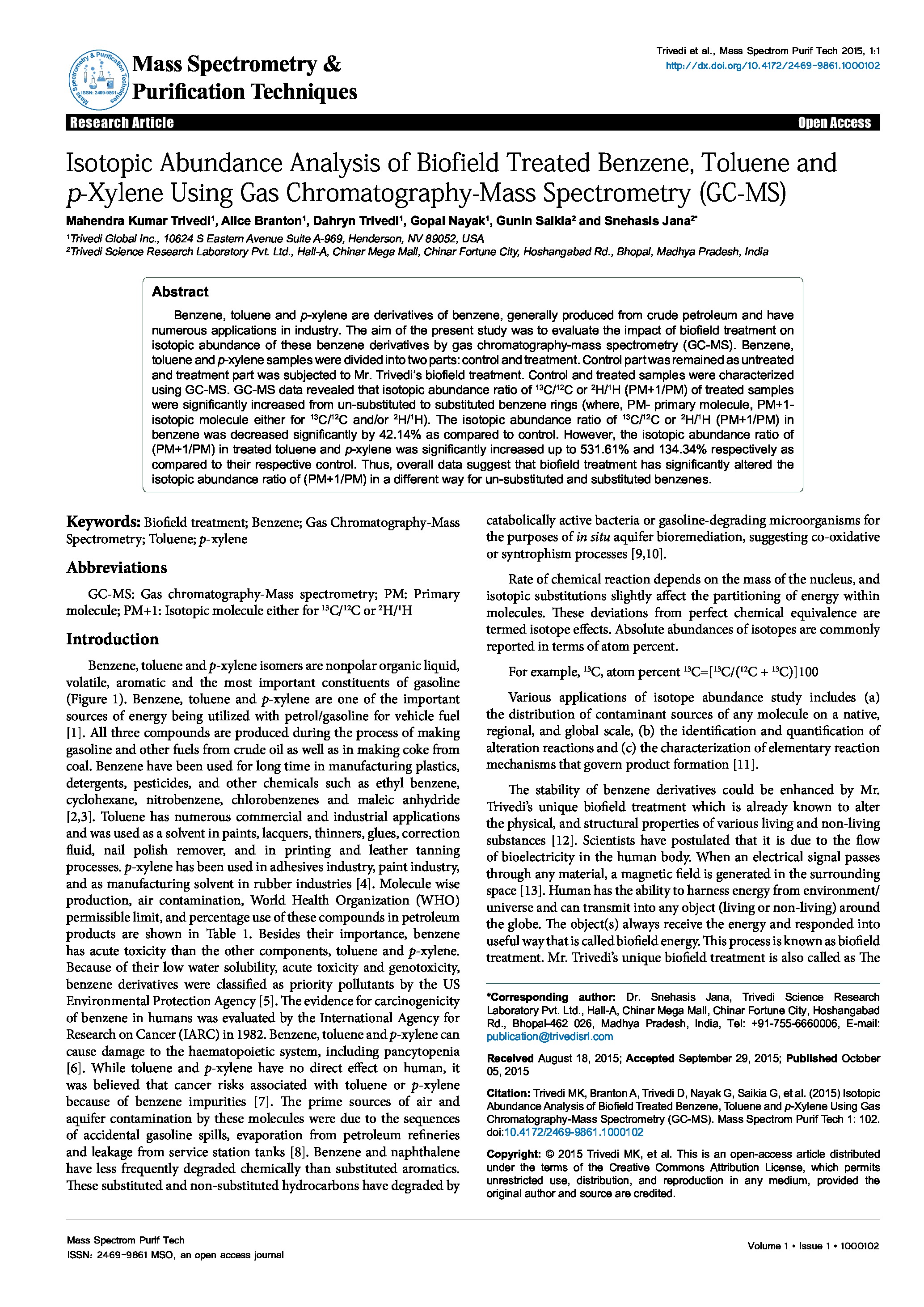Date of upload:
17.08.2016
Co-author:
Alice Branton, Dahryn Trivedi, Gopal Nayak, Ragini Singh, Snehasis Jana
Abstract:
P-Hydroxyacetophenone (pHAP) is an aromatic ketone derivative that is mainly used in the manufacturing of various pharmaceuticals, flavours, fragrances, etc. In the present study, the impact of Mr. Trivedi’s biofield energy treatment was analysed on various properties of pHAP viz. crystallite size, surface area, melting temperature, thermal decomposition, and spectral properties. The pHAP sample was divided into two parts; one was kept as control sample while another part was named as treated sample. The treated sample was given the biofield energy treatment and various parameters were analysed as compared to the control sample by X-ray diffraction (XRD), surface area analyser, thermogravimetric analysis (TGA), differential scanning calorimetry (DSC), ultraviolet-visible (UV-VIS), and Fourier transform infrared (FT-IR) spectroscopy. The XRD studies showed the decrease in crystallite size of the treated sample (61.25 nm) as compared to the control (84.18 nm); however the intensity of peaks in diffractogram was increased in treated sample. Besides, the surface area of treated sample was decreased by 41.17% as compared to the control. The TGA analysis revealed that onset temperature as well as Tmax (maximum thermal decomposition temperature) was increased in the treated sample. However, the latent heat of fusion (ΔH) was decreased from 124.56 J/g (control) to 103.24 J/g in the treated sample. The treated and control samples were also evaluated by UV-Vis and FT-IR spectroscopy and did not show any significant alteration in spectra of treated sample as compared to the respective control. Hence, the overall results suggest that there was an impact of biofield energy treatment on the physical and thermal properties of pHAP sample.




